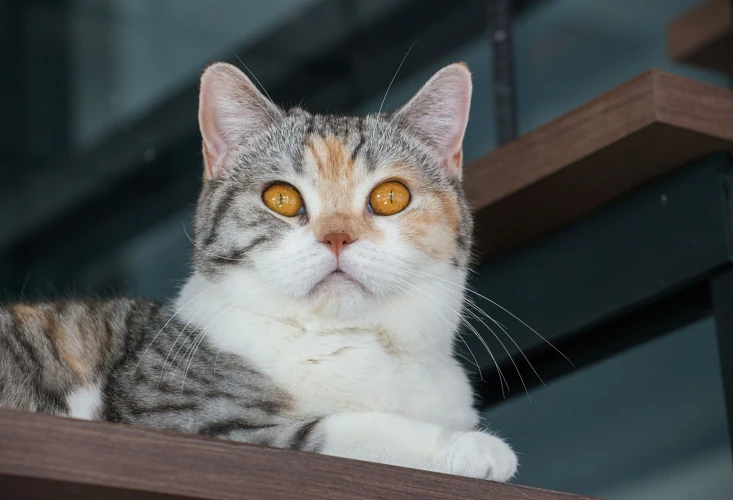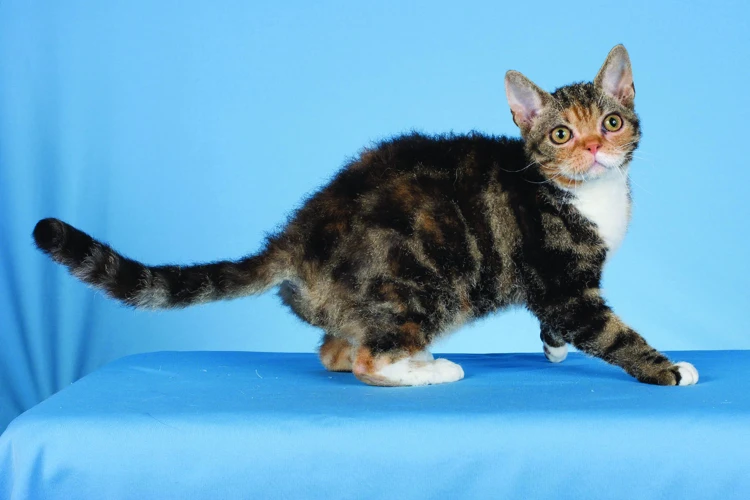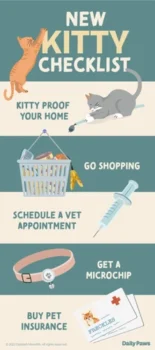Raising a litter of Wirehair kittens can be both exciting and intimidating for breeders. While it’s always a delight to welcome a new family of furry friends into the world, the prospect of caring for multiple kittens and finding suitable homes for them can also be quite daunting. As a breeder, you want to ensure that you’re providing an optimal environment and care for the kittens to thrive and grow into healthy adults. That’s why we’ve put together a handy checklist for breeders to follow before, during, and after the arrival of your Wirehair kittens. Whether you’re a seasoned breeder or just starting, these tips will help you prepare for and enjoy the kitten-rearing experience.
Before the Kittens Arrive

As a breeder, the arrival of Wirehair kittens is an exciting event. However, it’s important to be prepared in advance to ensure the health and safety of your feline family. Before the kittens arrive, there are several crucial steps you should take to create a nurturing environment for your mother cat and her litter. From preparing the nursery to gathering supplies to setting expectations, it’s essential to be organized and ready. It’s also important to address any potential health issues of the mother cat during the pregnancy and to be aware of labor and delivery tips. Read our wirehair pregnancy stages guide for cats, as well as our tips for feeding pregnant Wirehairs and potential health issues. In this section, we’ll take a closer look at what to do before the kittens arrive.
Preparing the Nursery
Preparing a comfortable and secure nursery is essential in ensuring that your wirehair kittens have a smooth transition to life outside their mother’s womb. This is a crucial step that every breeder should give priority when expecting kittens. Below are some important considerations when preparing the nursery.
1. Choosing a Location for the Nursery: The nursery should be located in a quiet and low traffic area to minimize disturbance to the mother and kittens. A spare room or a large closet can make an ideal nursery (link to /breeding-wirehairs-responsibly/). It should be well-ventilated, free from drafts, and kept at room temperature. A thermometer can be useful in monitoring temperature and ensuring it is comfortable for the mother and kittens.
2. Setting-Up the Nursery: The nursery should be set-up a few days before the mother is due to give birth. The nursing area should be spacious enough to fit a litter box and food and water dishes, which should be kept far from the litter box to prevent contamination (link to /postpartum-care-wirehairs-mom-kittens/). An appropriate litter material, such as newspaper, could be used at first and changed at least daily. Kittens should never be exposed to cat litter.
3. Cat-Proofing the Nursery: Cats are curious by nature, and kittens are no exception. Ensure that anything harmful or hazardous is out of reach or removed from the nursery. This may include toxic plants, cords, chemicals, and dangerous objects.
| Preparation Checklist | Action Required |
|---|---|
| Choose a location for the nursery | Identify a quiet, low traffic area, and keep it ventilated and at room temperature |
| Set-up the nursery | Prepare a spacious nursing area with a litter box, food and water dishes, and appropriate litter material |
| Cat-proof the nursery | Remove any hazardous or toxic items from the area |
By following these steps, the nursery is likely to be a safe and secure space for the kittens. It is important to note that as the kittens grow, they will need more space and opportunities to play. In the next section, we will discuss the supplies needed to care for wirehair kittens (link to /wirehair-labor-delivery-tips/).
Gathering Supplies
As a breeder, gathering the necessary supplies before the arrival of wirehair kittens can be a daunting task. However, it is essential to have all the necessary equipment at hand to ensure that the kittens are healthy and comfortable. Here is a checklist of the supplies that you will need before the kittens arrive:
| Supplies | Description |
|---|---|
| Kitten formula | Choose a high-quality kitten formula that meets their nutritional needs. Look for formulas specifically designed for kittens, which contain the appropriate amount of protein, fat, and other essential nutrients needed for healthy growth. |
| Kitten food | When the kittens are old enough, they will need to transition to solid food. Choose a high-quality kitten food that contains all the necessary nutrients that your kittens need for optimal growth and development. |
| Litter box | Choose a litter box that is appropriate for your kittens’ size, age, and needs. Look for a litter box with low sides that is easy for kittens to climb in and out of, and make sure it is large enough to accommodate their growth. |
| Litter | Choose a soft, clumping litter that is gentle on your kittens’ paws. Avoid any scented litters or those that contain harsh chemicals, as these can be harmful to your kittens’ health. |
| Bedding | Provide your kittens with a warm and cozy bed where they can sleep and rest. Choose soft bedding that is easy to clean and maintain, and make sure it is appropriate for your kittens’ size and age. |
| Toys | Provide your kittens with a selection of toys to keep them entertained and stimulated. Choose toys that are appropriate for their age and development, such as balls, plush toys, and scratchers. |
| Grooming supplies | Ensure that your kittens are clean and well-groomed by having grooming supplies on hand. This includes a kitten brush, nail clippers, and a gentle kitten shampoo. |
| Feeding dishes | Provide your kittens with separate feeding dishes for their food and water. These dishes should be shallow and easy for your kittens to access, and should be cleaned regularly to avoid any bacterial growth. |
| Medical supplies | Ensure that you have a first aid kit on hand, which includes items like gauze, bandages, and antiseptics. It’s also a good idea to have a thermometer to monitor your kittens’ temperature and ear cleaning solution to keep their ears clean. |
These supplies will help you provide the best possible care for your wirehair kittens and ensure that they grow up to be healthy and happy cats. Remember to choose high-quality products that are specifically designed for kittens and to clean and maintain these supplies regularly to ensure the health and well-being of your kittens.
Setting Expectations
It’s important to set clear expectations for yourself, your family, and any prospective owners of the wirehair kittens. Here are a few things to consider:
- Time commitment: Taking care of kittens is a big responsibility. Be prepared to dedicate a significant amount of time to feeding, cleaning, socializing, and monitoring their health.
- Financial commitment: It’s important to be financially prepared for any unexpected vet bills or other expenses that may arise. Make sure you have enough resources to provide proper care for the entire litter.
- Number of kittens: Make sure you have a realistic expectation of how many kittens the mother is likely to have and plan accordingly. Wirehair kittens tend to have smaller litters than other breeds.
- Color and gender: It’s important to understand that you may not be able to control the color or gender of each kitten. Be prepared to accept each kitten for who they are and not just for their appearance.
- Health concerns: Wirehair kittens may be more prone to certain health issues, such as skin irritations or dental problems. Be prepared to monitor their health closely and seek veterinary care as needed.
By setting these expectations upfront, you can ensure that you’re prepared for the responsibilities that come with breeding wirehair kittens and that you’re able to provide the best possible care for each kitten.
When the Kittens Arrive

As the due date of your Wirehair kittens draws near, you may feel a mix of excitement and nervousness. Once they arrive, it is important to be prepared to provide a safe and nurturing environment for them to thrive in. This is where the real work begins, but with the right mindset and resources, you can ensure that your kittens will grow up to be healthy and happy cats. Here are some key steps to take when your kittens arrive.
Providing a Safe Space
When the wirehair kittens finally arrive, it’s essential to provide them with a safe space where they can explore and play without harm. Here are some tips for creating a secure home base for your new furry friends:
- Choose a Comfortable and Quiet Location: Find a quiet and safe spot to place your kitten’s bed. Ensure that the room is not too cold or too hot, and keep it well-ventilated. Make sure there are no hazards like electrical cords, sharp objects, or poisonous plants present in the room.
- Provide a Cozy Bed: A comfortable bed is important for your kitten to feel secure. Choose a bed that is the correct size for your kitten and includes bedding that is washable and cozy.
- Block off Potential Escape Routes: Wirehair kittens are curious and active creatures, so it’s fundamental to place safety gates or use childproof locks on doors, cabinets, and windows to prevent your kitten from escaping or accessing hazardous items.
- Remove Dangerous Objects: Before your wirehair kitten arrives, it’s imperative to remove any harmful items such as chemicals, sharp objects, and toxic substances from the room. Make use of baby-proofing supplies such as outlet covers, cabinet latches and store hazardous substances out of the reach of kittens.
- Introduce the Kitten to the Room Slowly: Spend some time with your kitten while introducing him to the space. Make sure he feels comfortable and doesn’t seem overwhelmed. Allow him to discover and explore the area while being careful not to let them do anything dangerous. You may also consider keeping him in an enclosed space such as a crate while you’re not around.
- Keep the Room Clean: Cleanliness is crucial when it comes to a kitten’s safety and health. Ensure that you have a regular cleaning routine and remove any waste from the litter box frequently.
By providing a safe and cozy environment, your wirehair kitten will be able to explore, play and grow without harm.
Monitoring Health
As a breeder, monitoring the health of your wirehair kittens is a top priority. Regular checkups will ensure the kittens are healthy and growing at the appropriate rate. Here is a table detailing the different methods of monitoring health and their recommended schedule:
| Area of Health | Recommended Frequency |
|---|---|
| Weight | Weekly |
| Appetite | Daily |
| Body temperature | Twice a week |
| Bowel movements | Daily |
| Urine output | Daily |
| Fur and skin condition | Weekly |
| Eye and nose discharge | Daily |
| Respiration rate | Twice a week |
In addition to these regular checkups, it’s important to be aware of any warning signs that may indicate an underlying health issue. Some warning signs to look out for include:
- Decreased appetite
- Lethargy or unresponsiveness
- Diarrhea or vomiting
- Coughing or sneezing
- Difficulty breathing
- Abnormal behavior (e.g. hiding, excessive meowing)
If you notice any of these warning signs or are concerned about your kittens’ health, it’s important to contact your veterinarian as soon as possible. They can help diagnose any underlying health issues and provide treatment. By regularly monitoring the health of your wirehair kittens, you’ll be able to catch any potential issues early on and ensure they grow up healthy and happy.
Socializing the Kittens
Socializing wirehair kittens is a crucial part of preparing them for their new homes. Here are some tips to ensure that your kittens are well-adjusted and friendly:
- Handle them often: From an early age, begin to frequently handle the kittens so they get used to human touch. This will help them to be more comfortable around people as they grow older.
- Expose them to different sounds: Play music, use the vacuum cleaner, or make other noises around the kittens so they become accustomed to various sounds. This will help them be less scared in their new homes.
- Introduce them to other animals: If you have other pets, slowly introduce them to the kittens so that they can get used to being around other animals. This will help them adapt to new homes that may have other pets.
- Encourage play: Play is an important part of socialization. Provide various toys for the kittens to interact with, such as catnip mice or balls to bat around. This will also help them to be more active and healthy.
- Expose them to different people: Have friends or family members come over and interact with the kittens. This will help them be more comfortable around different people.
- Positive reinforcement: Whenever kittens behave well, give them treats or praise. This will encourage them to continue behaving well and build positive associations with human interaction.
Remember to be patient and gentle during the socialization process. Wirehair kittens are sensitive creatures who may take some time to warm up to new situations. By following these tips, you can socialize your kittens effectively and set them up for success in their new homes.
After the Kittens Arrive
Now that your wirehair kittens have finally arrived, your job as a breeder is far from over. While exciting, raising newborn kittens requires careful attention and dedication, as every choice you make will impact their development and future. After the initial adjustment period, you’ll need to form a plan for finding homes for the kittens, cleaning and sanitizing the nursery, and reflecting on what you’ve learned through the process. Let’s take a closer look at these important post-birth tasks.
Finding Homes for the Kittens
Finding homes for the wirehair kittens is one of the most important steps for breeders. It can be a challenging process, but with proper planning, it can be successful. Below are some tips on how to find suitable homes for the wirehair kittens.
1. Start Early: It is recommended to begin advertising the kittens as soon as possible. Advertisements can be placed on social media, breed-specific forums, and websites. Breeders can contact their local animal shelters and pet stores to see if they can advertise there.
2. Screen Potential Adopters: Before handing over the kittens, breeders should screen potential adopters to ensure that they are suitable. It is essential to find good homes for the kittens with people who are knowledgeable about cats and willing to provide them with a loving environment.
3. Prepare Contracts: Contracts can help protect the breeder and the kitten. These contracts can specify the cat’s health, vaccination history, and care requirements. They can also address the buyer’s responsibility, such as spaying/neutering, and stipulate that the kitten can never be sold or transferred to anyone else.
4. Follow Up: Breeders may want to conduct follow-up visits or phone calls to ensure that the kittens are doing well in their new homes. This can give the breeder peace of mind and a sense of responsibility for the kittens they’ve bred.
5. Keep Connected: Breeders should stay connected with their new kitten owners to keep them informed about future litter releases, promote social interactions, and keep them engaged with the kitten community.
Finding suitable homes for wirehair kittens is a process that requires time and patience. Breeders need to screen potential adopters, prepare contracts, and follow up with new owners. Starting early and advertising on multiple platforms can also ensure that they find the best homes for their kittens.
Cleaning the Nursery
After the kittens have been adopted, it’s important to thoroughly clean the nursery to prevent the spread of disease and to prepare for the possible arrival of future litters. The following table outlines the steps breeders should take when cleaning the nursery:
| Step | Description |
|---|---|
| Remove and wash all linens and toys | Remove all bedding, towels, and toys from the nursery and wash them using hot water and a disinfecting detergent. Avoid using fabric softeners, as they can be toxic to cats. |
| Disinfect all surfaces | Using an animal-safe disinfectant, thoroughly clean all surfaces in the nursery, including walls, floors, and the litter box. Allow the disinfectant to sit for the recommended amount of time before wiping down with water and allowing to dry. |
| Check for any damage | Inspect the nursery for any damage that may need to be repaired before the next litter arrives. |
| Replace litter box | Throw away the old litter box and replace it with a new one to prevent the spread of bacteria and illness. |
| Inspect ventilation | Check the nursery’s ventilation system and filters to ensure there is no build-up of dust or debris that could cause respiratory issues for future litters. |
| Store supplies | Clean and store all supplies, such as carriers, bowls, and grooming tools, in a safe place until the next litter arrives. |
By following these steps, breeders can ensure that their nursery is thoroughly cleaned and prepared for the arrival of the next litter. Remember to always use animal-safe cleaning products and to wear gloves while cleaning to protect yourself and the cats from any harmful chemicals.
Reflecting and Learning
As a breeder, reflecting on your experience with the arrival and care of wirehair kittens is essential for learning and improving your future practices. Keeping track of important information and details in a record-keeping system is highly recommended. This will help you remember what worked and what didn’t, and what to do differently in the future. You may want to consider creating a spreadsheet to track details such as birth dates, weight gain, health concerns, and adoption dates.
Reflecting and learning also involves seeking input from others in your community. This could mean speaking with fellow breeders, attending conferences or workshops, or joining online forums or social media groups dedicated to cat breeding and care. By hearing different perspectives and experiences, you can gain new insights and knowledge that can inform your breeding practices.
Additionally, getting feedback from the families who adopt your kittens can also be valuable in improving your breeding program. Ask for their thoughts on the temperament, health, and overall experience of adopting one of your kittens. This can help you identify areas for improvement and further refine your breeding practices.
To summarize, reflecting and learning is an important part of being a responsible breeder. Keeping detailed records and seeking input from others can help you continually improve your practices and provide the best care possible for your wirehair kittens.
| Steps for Reflecting and Improving: |
|---|
| 1. Keep detailed records of kitten care and health |
| 2. Seek input from the cat breeding community |
| 3. Ask for feedback from adoptive families |
| 4. Use feedback to refine your breeding practices |
Conclusion
In conclusion, preparing for the arrival of Wirehair kittens requires careful planning, diligence, and a lot of love. As a breeder, it’s your responsibility to ensure that the kittens are well-cared for, healthy, and happy. By following the checklist we’ve provided, you can be confident that you’re providing the best possible start in life for these little bundles of joy.
Remember to take the time to prepare the nursery, gather the necessary supplies, and set expectations for yourself and any potential adopters. When the kittens arrive, focus on providing a safe and comfortable space, monitoring their health closely, and socializing them regularly.
Once the kittens are old enough to find their forever homes, make sure you’re finding homes that will provide the same level of care and love that you’ve given them. Don’t hesitate to ask potential adopters plenty of questions and conduct a thorough screening process.
Finally, take the time to reflect on the experience and learn from any challenges or successes you encountered. While every litter is unique, there’s always room to improve and grow as a breeder.
Overall, we hope that this checklist has been helpful in preparing for the arrival of your Wirehair kittens. Good luck and have fun on this exciting journey of bringing new life into the world!
Frequently Asked Questions
1. How long is the gestation period for Wirehair cats?
Typically, the gestation period for Wirehair cats lasts around 63-68 days.
2. When can you start introducing solid food to Wirehair kittens?
Wirehair kittens can start eating solid food at around 4-5 weeks old, alongside their mother’s milk.
3. Are Wirehair kittens hypoallergenic?
No cat breed is completely hypoallergenic, but Wirehair cats are known for producing less allergens than other breeds due to their coat type.
4. How often should you change the bedding in the kitten nursery?
You should aim to change the bedding in the kitten nursery at least once a week, but more frequently if necessary to maintain a clean and comfortable environment.
5. What should you do if a Wirehair kitten shows signs of illness?
If a Wirehair kitten shows signs of illness, it is important to consult with a veterinarian immediately to ensure prompt and proper treatment.
6. When should you begin socializing Wirehair kittens?
You can begin socializing Wirehair kittens as early as 2-3 weeks old, by gently handling them and introducing them to different sights, sounds, and people.
7. Do Wirehair cats require special grooming?
Wirehair cats do require regular grooming to maintain their unique coat, including brushing and occasional bathing to prevent matting and tangles.
8. How can you find responsible homes for Wirehair kittens?
You can find responsible homes for Wirehair kittens by screening potential owners and asking for references, as well as working with breed-specific rescue organizations or reputable breeders.
9. What should you do to prevent overcrowding in the kitten nursery?
To prevent overcrowding in the kitten nursery, ensure that there is adequate space for each kitten, and consider fostering out some kittens to other trusted caregivers if necessary.
10. Can Wirehair cats get along with other pets?
Wirehair cats can get along with other pets, but it is important to introduce them slowly and supervise their interaction to ensure a safe and peaceful coexistence.







